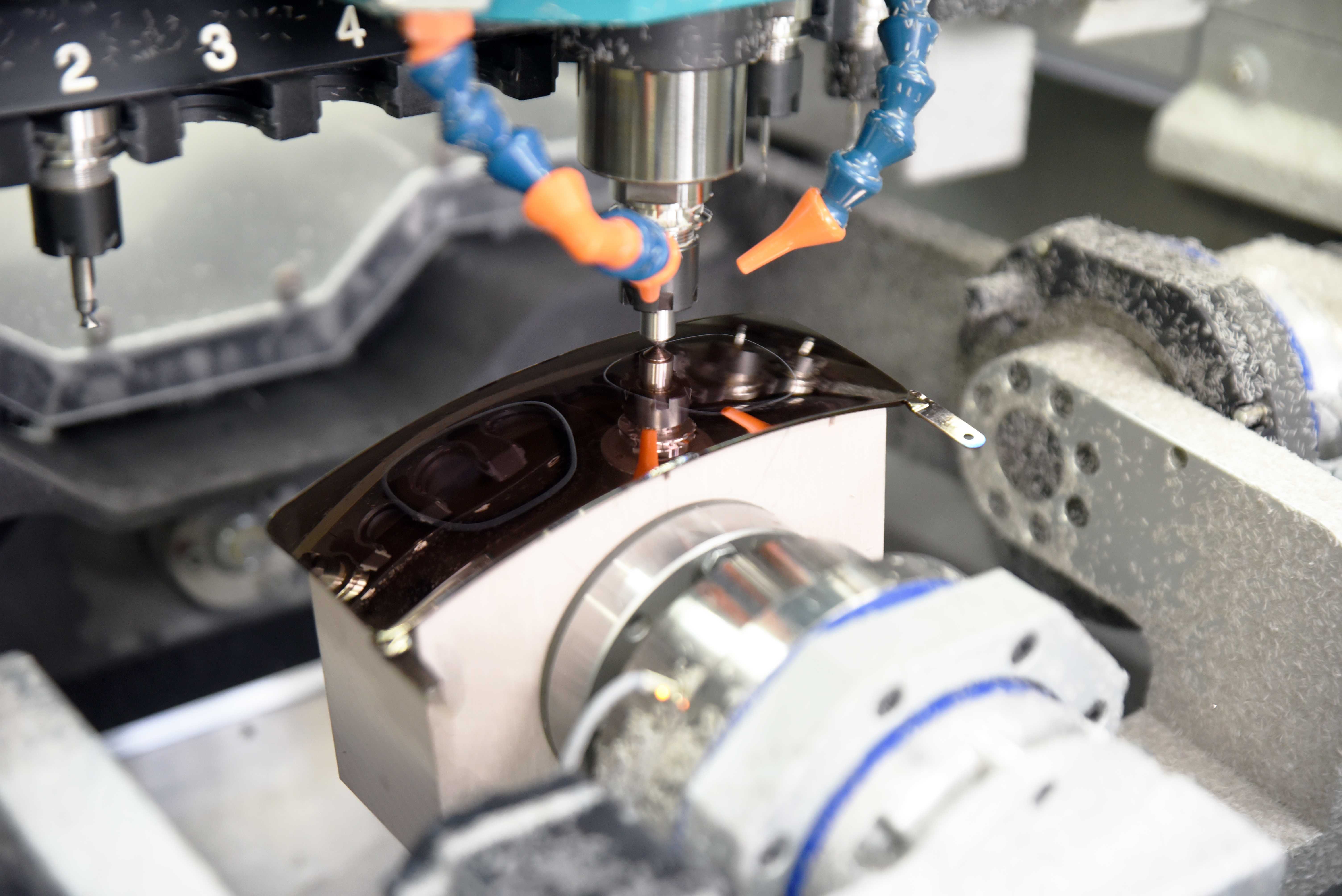Table of Contents
Step into modern eye care, where the Lens Edger is pivotal. It has revolutionized how opticians craft and fit lenses into eyeglass frames. This article is your gateway to understanding the various types of edgers and their advantages.
Using lens edgers improves the precision and speed of eye care procedures. This guide provides detailed information on lens edging for those who work with eyes or want to learn to make glasses.
The demand for lens edger machines is on a steady rise, with more offices now capable of producing their own. This shift from relying on large companies for equipment supply to in-house production is a testament to the industry’s evolution. Technological advancements have also resulted in high-quality features, ensuring these machines deliver top-notch performance.
Our discussion aims to share every detail you should know about the device. We equip you with enough knowledge to make an informed decision when shopping for one. Find out more!
What is a lens edger?
One of the significant pieces of equipment that forms part of the optical manufacturing industry is a lens edger machine. Specialists use the equipment to cut, edge, and grind optical lenses to go with specific frames. They design optical lenses for them to meet particular requirements.
Specialists use different materials to design optical lenses. While some are glass, others are plastic lenses that fit inside a frame to correct or boost a patient’s vision. A lens edger matches the dimensions and shape of the optical lens with that of the frame to fit perfectly. Every optical lens’s contour and thickness are unique depending on the form of correction a patient needs. Lens edging machines perform different functions, such as:
- basic automatic cuts
- milling
- grooving
- sophisticated drilling
- polishing
It is undeniable how far lens edgers have come from. In the past, people used a ceramic cutting wheel to hand edge glass lenses. Thanks to edging systems developments, we now have automated lens edgers that cut optical lenses accurately. Some of the advanced lens edgers can even engrave these lenses in the least time possible.
Benefits of Using a Lens Edger

Eye care is always changing, with technology improving services and making patients happier. A significant advancement in this area is the lens edger, an essential tool for optometrists and optical laboratories. This advanced equipment offers numerous benefits that simplify procedures, enhance accuracy, and ultimately lead to better results for patients. In this article, we delve into the primary benefits of integrating a lens edger into eye care practices.
Enhanced Accuracy and Precision
One of the primary benefits of using a edger is its unparalleled precision. New lens edgers have digital interfaces and automated systems to shape lenses accurately.
This high level of accuracy is important for finding the right fit for different glasses. This helps improve how well you can see and how comfortable they are. By reducing human errors, lens edgers guarantee that each lens meets the exact specifications necessary for optimal vision enhancement.
Enhanced Time and Cost Effectiveness
Advancements in lens cutting technology have made optical operations more efficient. Old ways of making and fitting lenses took a lot of time and effort. But now, machines can do these tasks much quicker. This helps optical professionals serve more patients and be more productive.
Also, using machines for cutting reduces waste and saves money. This means optical labs can make more profit while still giving top-notch service.
Customization Opportunities for Lenses
Customization is a major movement in modern eye care, spearheaded by lens edgers. These devices facilitate the customization of lenses to meet the unique requirements of each individual. Lens edgers can customize lenses to fit unique frames or specific prescriptions, providing personalized solutions. This is extremely helpful for people with complicated vision needs, ensuring they get the best correction and comfort.
Improved Patient Satisfaction
Eye care professionals aim to increase patient satisfaction by using lens edgers. These machines help create custom lenses quickly, leading to a better experience for patients. Faster delivery times and perfectly fitted products make patients happy and build trust. This quality service encourages patients to come back for future eye care needs and recommend the practice to others.
Improved Efficiency and Productivity
Integrating a lens edger into an optical practice can streamline the entire operation. Automating lens shaping and fitting allows optical staff to focus on important tasks. These tasks include consulting with patients and adjusting eyewear.
This automation helps staff prioritize patient care. It also streamlines the process of fitting eyewear. This improved process leads to a more effective utilization of time and resources, enhancing overall productivity.
Modern lens edgers have user-friendly interfaces and software that make the process easier. This makes it accessible for everyone, including those who are not familiar with the technology.
Environmental Advantages
A frequently overlooked advantage of using a lens edger is its positive impact on the environment. Traditional lens shaping techniques typically generate more waste material. Conversely, the precision of automated lens edgers minimizes waste, promoting more environmentally friendly practices in the optical industry. By reducing material waste, optical labs can lessen their environmental footprint and promote eco-friendly operations.
Competitive Advantage
In a competitive market, having the latest technology can make an optical practice stand out. By investing in a good lens edger, you show that you value providing excellent eye care. This will attract patients looking for top-quality service.
In a competitive market, having the latest technology can help an optical practice stand out. Investing in a high-quality lens edger demonstrates a commitment to advanced eye care. This can attract patients who seek top-notch service. It shows that the practice is a top performer in the field, able to achieve great results using the newest technology.
The benefits of using a lens edger in eye care are substantial. From improved precision and efficiency to enhanced patient satisfaction and environmental sustainability, these devices transform optical practices. Eye care professionals can improve service, work better, and stay competitive by using lens edging technology in their practice. If you’re an eye doctor or own an eyeglass lab, buying a edger can help your business grow and thrive.
Start an optical lab with a lens edger machine.

Offering an edging system at an optical lab can lower bills and save your practice some funds. You can conduct edging tasks with ease by investing in a lens edger for your lab. Consider getting a piece of equipment that can edge any job, including both sophisticated and straightforward tasks. The market offers numerous models of lens edgers that have different capabilities. You can get one that allows you to perform various tasks.
As an optician, getting a lens edging machine that allows you to multitask can boost productivity. Most of the lens edging systems that are in the market are also quite user-friendly. You can operate them with ease, even if it is your first time edging lenses. They often come with an easy-to-understand display layout as well as step-by-step guides to help you through the entire process. The touchscreens of such machines are also quite intuitive.
The latest edgers give you access to the auto-refraction technology that allows you to align lenses properly. Such can help you cut optical lenses with precision. They also facilitate automated blocking to minimize human error. Though it is impossible to find the perfect equipment for the job, buying a modern edger machine for your lab can enhance efficiency.
As you establish an optical lab, you need to focus on delivering the best service to your patients. A lens edger can help you achieve that since it increases patient satisfaction due to fast turnaround. It can make your facility more competitive than others since you can offer same-day services. While most optical labs request patients to come for their lenses after a couple of days, having a lens edger machine prevents such delays.
Consider keeping stock lenses in your lab so that you can edge optical lenses on-site. Same-day services can help you grow your business and gain more customers in the future. If a patient happens to break their glasses, they can be confident knowing that you can obtain a replacement pair within the same day from your optical lab. Offering such services to patients increases convenience.
Before buying lens edgers, you have to consider particular factors to get the most out of them. For instance, your specific needs and budget play a significant role during purchase. Though some cheap models exist, they may lack certain features that can help you perform more tasks. It would help if you chose a edger that offers reliability and precision. A good one should be able to edge different types of lenses, even with complex shapes. It should eliminate a lot of manual processes so that you can enjoy hands-free operation.
Look for a lens edging machine that can complete the process in a single step while preventing the optical lens’s damage. You have a lot of options to select from. Take your time to compare the brands available so that you can choose the best one for your specific needs. We recommend an all-in-one lens edging machine such as EZ-fit, which is suitable for optical shops. Choosing the model enables you to save some funds since it comes at an affordable price without compromising quality.
[irp posts=”3815″ name=”A Guide on How to Start an Optometry Clinic for an Optometrist”]
Global lens edger machine market competitive analysis

If you are interested in joining the lens edger market, you should go through reports that share insights regarding the industry’s state. Going through analysis reports can help you identify some of the industry’s key players, including Nidek, MEI, Luneau technology, and Huvitz Co Ltd. Experts analyze the current state of the market and give predictions regarding its state in the future. They also cover developmental plans and policies as well as analyze cost structures.
Reading competitive analysis reports can help you understand the key statistics on the industry to gauge its ability to bring you profits. Lens edgers’ use has spread across different regions, including Europe, Asia, American Japan, and China. If you are in one of these countries, you can easily find different edger brands to set up an optical lab with ease. Specialists also forecast the size of the lens edger market by 2024. They provide tables that contain different figures to support market analysis.
[irp posts=”4021″ name=”Becoming An Optometrist: A Guide”]
FAQs About Lens Edgers
- What is the purpose of a lens edger in an optical lab?
- Lens edgers are used to shape lenses to fit into frames precisely.
- How do I maintain a lens edger?
- Regular cleaning, calibration, and software updates are essential.
- Can lens edgers handle all types of lenses?
- Most modern lens edgers can handle a variety of lens materials and types.
- What are the common problems with lens edgers?
- Misalignment, dull cutting wheels, and software glitches are common issues.
- Is it worth investing in an automatic lens edger?
- Automatic lens edgers offer higher precision and efficiency, making them a worthwhile investment for many optical practices.
Conclusion
Most people spend too much time staring at computers and television screens. Such gadgets sometimes lead to vision problems. The increase of visual impairment has led to the growth of the lens edger machine industry. Ophthalmologists work hard to try and solve visual problems before they worsen. You can also help out by getting the right lens edger for your optical lab.
Though traditional optical edgers still exist, they lack some of the valuable features that simplify operations. You should, therefore, consider getting one that can cut organic optical lenses, which are ideal for a frame and prescription. Modern eyeglasses come in different shapes, and having a suitable lens edger is a requirement for an optical lab.
Before you make your purchase, you must familiarize yourself with everything surrounding the market. It would be best to have some factors in mind as you choose a high-quality lens edging machine. You need one that can give you service for a long without the need for replacement.
Please visit our website Nava Ophthalmic if you ready to open an eye clinic.

Matthew Strachovsky, M.D.
Dr. Strachovsky's undergraduate training began in Boston, Massachusetts at Boston University and was completed at Stony Brook University in Long Island, NY. There he graduated Summa Cum Laude, obtaining a Bachelor of Science degree in Biology with special recognition for academic achievement.
He continued his education at Stony Brook School of Medicine and graduated with the additional designation of the "MD with Recognition" program. He worked as an intern in Internal Medicine at Winthrop University Hospital in NY and pursued a residency at Stony Brook University Hospital in Ophthalmology acting as Chief Resident in his final year. He completed his fellowship training in Vitreoretinal disease with a major emphasis on the diagnosis and management of retinal vascular diseases under the direction of Dr. Michael O'Brien at Koch Eye Associates in Rhode Island.
Dr. Strachovsky has presented research at the annual Association for Vision and Research in Ophthalmology meeting and published articles in journals including, Investigative Ophthalmology and Visual Science and The Journal of Neuro-ophthalmology.
Dr. Strachovsky's professional interests include the management of Age-Related Macular Degeneration and diabetic eye disease. He is Board Certified in Ophthalmology and a member of the American Academy of Ophthalmology, American Society of Retina Specialists, Young Ophthalmologist Network, and Leading Physicians of the World.
" I believe that the physician/patient relationship is more important than ever. Being an Ophthalmologist allows me to help patients and build a foundation of trust, knowledge, and professionalism when it comes to eye care".
